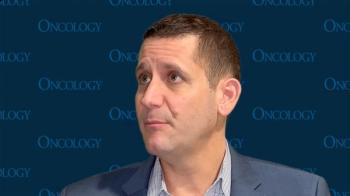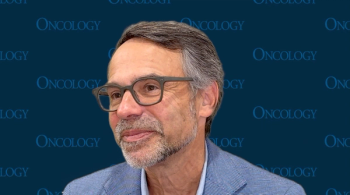
- Oncology Vol 29 No 4_Suppl_1
- Volume 29
- Issue 4_Suppl_1
(S006) Impact of Delays to Adjuvant Radiation Therapy on Survival in Squamous Cell Carcinoma of the Oral Cavity and Oropharynx
Delays to adjuvant RT > 60 days increased mortality by 17% to 35% compared to patients treated earlier. Current efforts should be focused on timely delivery of care, and further investigation into factors associated with delays is necessary.
Erik Liederbach, BS, Carol M. Lewis, MD, MPH, Chi-Hsiung Wang, PhD, Arif Shaikh, MD, Mihir K. Bhayani, MD; Department of Surgery, Center for Biomedical Research Informatics, Department of Radiation Oncology, Department of Head and Neck Surgery, NorthShore University HealthSystem; Department of Head and Neck Surgery, UT MD Anderson Cancer Center
INTRODUCTION: Few studies have analyzed how treatment delays to postoperative radiation therapy (RT) for oropharynx and oral cavity squamous cell carcinoma (OSCC) affect overall survival (OS). This study investigates time intervals from surgery to RT using the National Cancer Data Base (NCDB).
METHODS: Utilizing the NCDB, we selected 14,058 stage I–IV OSCC patients (4,786 oropharynx, 9,272 oral cavity) treated with surgery and RT from 1998 to 2011. Patients who received neoadjuvant radiation or chemotherapy, adjuvant chemotherapy, and biopsy alone were excluded. Analysis of Variance (ANOVA) and Cox proportional hazard models were utilized. Patients were categorized into four delay groups based on their time from surgery to RT initiation (group 1: ≤ 30 d, group 2: 31–60 d, group 3: 61–90 d, and group 4: > 90 d).
RESULTS: The median age was 59 years (range: 18–90 yr), and 9,570 (68.1%) of patients were male. Half of the patients (51.2%) were treated at academic/research facilities. The overall median time from surgery to initiation of adjuvant RT increased from 42 days in 1998 to 52 days in 2011 (P < .001). In 2010–2011, stage I patients on average received RT 11 days earlier than stage IV patients (41 d vs 52 d; P = .007), and patients with no insurance waited 6 days longer compared to patients with private insurance (55 d vs 49 d; P < .001). Patients treated at academic/research hospitals experienced longer delays compared to patients treated at community hospitals (51 d vs 44 d; P = .028), and those treated in the Middle Atlantic region waited the longest for RT (57 d) compared to the West South Central region (42 d; P < .001). There were no significant delays identified among age groups, races, and genders. Between 1998 and 2006, there were 9,677 (68.8%) patients available for survival analysis, who had a median follow-up of 3.7 years (range: 1–13 yr). The unadjusted 5-year OS rates for each group were 53.0% for group 1, 48.4% for group 2, 44.3% for group 3, and 36.0% for group 4 (P < .001). After adjusting for patient, facility, and tumor factors, survival was significantly reduced in group 3 (hazard ratio [HR] = 1.17; 95% confidence interval [CI], 1.06–1.29; P < .001) and group 4 (HR = 1.35; 95% CI; 1.19–1.54; P < .001) compared to group 1. Patients who started RT in group 2 had equivalent survival to group 1.
CONCLUSIONS: Delays to adjuvant RT > 60 days increased mortality by 17% to 35% compared to patients treated earlier. Current efforts should be focused on timely delivery of care, and further investigation into factors associated with delays is necessary.
Proceedings of the 97th Annual Meeting of the American Radium Society -
Articles in this issue
Newsletter
Stay up to date on recent advances in the multidisciplinary approach to cancer.
















































































